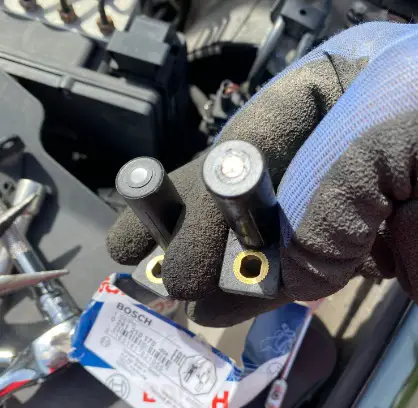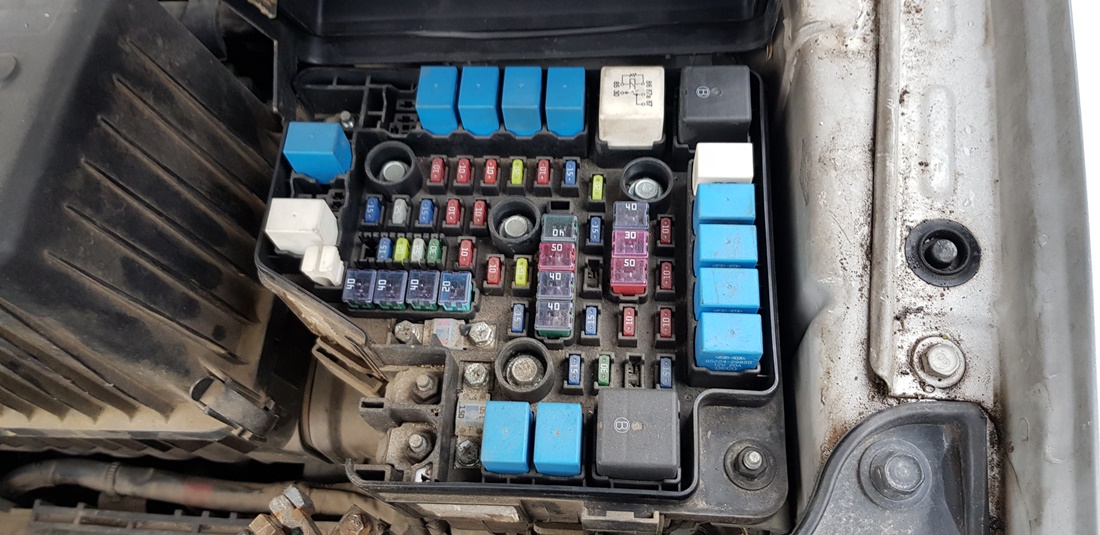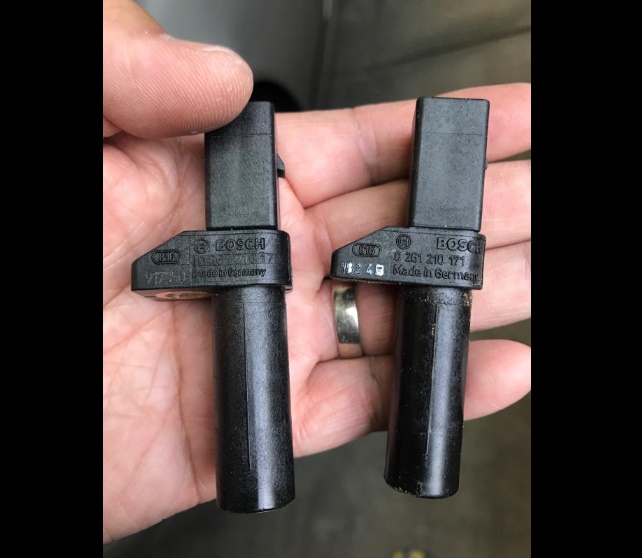It can be quite frustrating to see your ABS system light illuminated. There is a procedure on how to do a quick reset on your ABS system. This is something that the repair shops, dealerships, and car manufacturers don’t want you to know about.
I used to drive with my ABS system light illuminated for quite a while before I took my car to the repair shop. Once I got there, the maintenance chief told me that they need to do a reset of the ABS system and that it will cost me $100.
At that point, I didn’t know a lot about ”resets” but I knew that it was something done on a computer without any labor or parts included.
I got angry that they were going to charge me so much money just for a simple reset and I took things into my own hands. After a quick search on the internet, I was able to find a hidden jewel. This is how to do a quick reset on your ABS system:
- Key Takeaway
- What Is ABS System In Cars
- How To Do a “QUICK Reset” on Your ABS System
- 4 Most Common Causes For Illuminated ABS Light
- Can I Drive With The ABS Sensor Unplugged?
- FAQs
- Q: How can I reset the ABS light without a scan tool?
- Q: What is an ABS system?
- Q: Why is my ABS light on?
- Q: Can I reset the ABS light on my vehicle without fixing the underlying issue?
- Q: How often should I check my ABS system?
- Q: Will resetting the ABS light also reset the traction control light?
- Q: How do I replace the ABS fuse?
- Q: What should I do if the ABS light comes on while driving?
- Q: How do I reset the ABS light on a Freightliner truck?
- In Conclusion
Key Takeaway
- To perform a “quick reset” on your ABS system, turn the ignition key on, press the gas pedal three times, and then start your engine.
- The ABS (Anti-lock Braking System) in cars is a safety system that prevents the wheels from locking up (ceasing rotation) during braking, thereby maintaining the vehicle’s directional stability and control.
What Is ABS System In Cars
The ABS (Anti-lock Braking System) in cars is a safety feature designed to prevent the wheels from locking up or skidding during braking, especially on slippery surfaces.
It allows the driver to maintain steering control while braking by automatically modulating the brake pressure to each wheel.
This system uses sensors to monitor the speed of each wheel during braking. If the system detects that one or more wheels are about to lock up, it will adjust the brake pressure to that wheel or wheels.
This helps to maintain traction and allows the driver to steer the vehicle effectively, even while braking heavily.
How To Do a “QUICK Reset” on Your ABS System

Follow these steps and at the end of the procedure, hopefully, your ABS system light will be turned off.
1. Turn the key on

Place the key into the keyhole and turn it on. However, do not start your vehicle just yet. Keep the key in the ‘on’ position. This action is only to provide power to the vehicle’s system. You should have your ABS light illuminated at this point.
2. Press the gas pedal 3 times

Once all of the lights are illuminated on the dashboard, including the ABS light, press the gas pedal 3 times. There is no clear information on why you have to press the gas pedal in order to activate the ABS system. But, I’ve tried it and it worked for me so please do it yourself.
3. Start your engine

At this point, the ABS system reset process is completed. Hopefully, this will reset your ABS system light. Performing the previous steps allows the vehicle’s main computer to reset all of the error data associated with the ABS and gather new data.
Your ABS system parameters will realign and begin working properly. This new information will be then sent to the vehicle’s main computer and the ABS light will stay off.
4. If your ABS light didn’t go off
If you performed the previous 3 steps and your ABS system light still didn’t reset, that is absolutely fine. Some vehicles require an additional thing that you need to do. Take your vehicle for a test drive and accelerate above 15 miles per hour.
When I did the ABS system reset on my Hyundai, it worked with the 3 steps. But, my brother’s Volkswagen didn’t. We did research online and found out that on some vehicles, the ABS systems are activated when you drive above 15 miles per hour. That’s when the ABS system sends information to the main computer.
4 Most Common Causes For Illuminated ABS Light
- Failed speed sensor
- Damaged magnetic sensor
- Blown ABS fuse
- Bad ABS control module

I am going to talk about the 4 most common causes of illuminated ABS light. Before you start, always cut all electrical power to your vehicle system. Remove the black terminal on your vehicle battery and place it in a way that won’t touch the car battery while you work on your vehicle.
1. Failed Speed Sensor

The most common cause of ABS light illuminating on your dashboard or instrument cluster is a failed speed sensor. You can check the condition of the speed sensor by performing an inspection. This inspection can be done with your tire still attached to the vehicle.
The speed sensor works in a way that a magnetic ring that the speed sensor wiring connects communicates with the speed sensor on the hub assembly as well and sends that reading to the actual vehicle computer.
All four tires have to be the exact same reading. In the event that one-speed sensor fails, it will no longer create that constant reading that the other three are giving, thus you will get the ABS fault.
So, just inspect the speed sensors and make sure there is no heavily coated corrosion and no dents. Make sure all of the electrical wiring are secure and there are no signs of stress (melted or cut wires).
2. Damaged Magnetic Sensor
As the wheel spins, your magnetic ring communicates with your speed sensor and your speed sensor sends that data to the onboard computer. All four tires have to have the exact reading which means all four tires have to be spinning at the same speed.
However, over time these parts fail and the most common cause of this failure is a damaged magnetic ring.
With that said, over time as the magnetic ring ages, it becomes brittle and weak. It actually begins to fall apart inside and pieces of the magnetic ring begin to fall off. At that point, as your wheel is spinning, your speed sensor is no longer gathering a constant or correct reading from the magnetic ring because the magnetic ring is missing pieces.
Once it gets to that point, your speed sensor sends the signal to the onboard computer that something has gone wrong here and your onboard computer will throw that ABS light on.
3. Blown ABS Fuses

Most vehicles have three ABS fuses. If one of those, or all three fuses are blown, you will definitely see an ABS light on your vehicle’s dashboard.
Locate the fuse box in your engine compartment. Open up the fuse box cover and flip it. You will see that on the inside of the cover, there is a scheme of how the fuses are set up. Position the cover in a way that it is mirroring the actual layout of your fuses.
The ABS fuses are marked and you will be able to find their location on the cover (for example ABS 30 or ABS 40). Remove the actual ABS fuses and inspect them. If they are blown, replace them with new ones. While you are at it, inspect the inner ports where the fuses are installed.
4. Bad ABS Control Module
I have placed this most common cause as number four because it is the least likely. However, in the event that you have completed all the first three steps and/or replaced all the parts and your ABS light is still on, it’s very possible that your ABS control module needs to be replaced. A bad ABS control will throw an error code and your ABS light will be illuminated.
This is a very dynamic and unique part because the module is the brain of the system. It communicates with the entire ABS system and verifies that all ABS parts are properly configured and operating in their normal state. However, again, this could fail says 2carpros.
Can I Drive With The ABS Sensor Unplugged?
While it is technically possible to drive with the ABS sensor unplugged, it is not recommended because the system will not function properly and this could lead to loss of control during braking, especially on slippery surfaces or during sudden stops.
Additionally, driving with the ABS sensor unplugged may be illegal in some jurisdictions due to the essential role of ABS in vehicle safety.
Therefore, if your ABS sensor is faulty or disconnected, it is strongly advised to have it repaired or reconnected as soon as possible.
FAQs
Q: How can I reset the ABS light without a scan tool?
A: If you don’t have a scan tool, you can try resetting the ABS light on your vehicle by disconnecting the negative terminal of the battery for about 15-20 minutes. This will allow the ABS system to power down and reset. However, keep in mind that this method may not work for all vehicles and it’s always recommended to consult your vehicle’s manual or a professional mechanic for specific instructions.
Q: What is an ABS system?
A: ABS stands for Anti-Lock Braking System. It is a safety feature in vehicles that helps prevent the wheels from locking up during braking maneuvers. The ABS system works by continuously monitoring the speed of each wheel and modulating the brake pressure to ensure effective braking while allowing the driver to maintain steering control.
Q: Why is my ABS light on?
A: There are several reasons why the ABS light may come on. It could be an issue with the ABS sensor, a faulty ABS module, a problem with the ABS control module, or even a fault code stored in the system. It’s advisable to have your vehicle diagnosed by a professional mechanic to determine the exact cause of the ABS light illumination.
Q: Can I reset the ABS light on my vehicle without fixing the underlying issue?
A: While resetting the ABS light may temporarily turn off the warning light, it will not fix the underlying issue that caused the light to come on in the first place. It’s important to address any potential problems with the ABS system as soon as possible to ensure the safety of your vehicle and passengers. Consulting a professional mechanic is recommended to properly diagnose and repair the issue.
Q: How often should I check my ABS system?
A: It is recommended to have your ABS system checked regularly during routine vehicle maintenance, or if you notice any issues such as the ABS light staying on or experiencing unusual braking behavior. Keeping your ABS system in good working condition is crucial for your safety on the road.
Q: Will resetting the ABS light also reset the traction control light?
A: In most vehicles, resetting the ABS light will also reset the traction control light since these systems are often interconnected. However, it’s always best to consult your vehicle’s manual or a professional mechanic to confirm the specific reset procedure for your vehicle.
Q: How do I replace the ABS fuse?
A: To replace the ABS fuse, follow these steps:
1. Turn off your engine and engage the emergency brake.
2. Locate the fuse panel in your vehicle, usually under the dashboard or in the engine compartment.
3. Consult your vehicle’s manual to find the specific location of the ABS fuse.
4. Using a fuse puller or a pair of needle-nose pliers, carefully remove the blown ABS fuse from its socket.
5. Insert a new fuse with the same rating into the empty socket.
6. Start your vehicle and check if the ABS light has been reset. If the light is still illuminated, there may be a deeper issue with the ABS system that requires inspection and repair by a professional mechanic.
Q: What should I do if the ABS light comes on while driving?
A: If the ABS light comes on while you are driving, it’s important to stay calm and follow these steps:
1. Avoid panic braking or making sudden maneuvers. Maintain a safe driving speed and try to reach a safe location to pull over.
2. Check the brake fluid level in your vehicle. Low brake fluid levels can sometimes trigger the ABS warning light. If the fluid level is low, top it up as soon as possible.
3. Once you have reached a safe location, turn off your engine and engage the emergency brake.
4. Inspect the ABS fuse to see if it is blown. If the fuse appears to be damaged, you may need to replace it. However, it’s always advised to consult a professional mechanic for a proper inspection and repair of the ABS system.
Q: How do I reset the ABS light on a Freightliner truck?
A: To reset the ABS light on a Freightliner truck, you can try the following steps:
1. Start by turning off your engine and engaging the emergency brake.
2. Open the fuse panel located either under the dashboard or in the engine compartment.
3. Locate the fuse labeled “ABS” or “Anti-Lock Braking System”.
4. Remove the fuse using a fuse puller or a pair of needle-nose pliers.
5. Wait for about 10-15 seconds and then reinsert the fuse back into its original position.
6. Start your Freightliner truck and check if the ABS light has been reset. If it is still illuminated, there may be an underlying issue with the ABS system that requires professional diagnosis and repair.
In Conclusion
The ABS system is a vital part of maintaining the health and performance of your vehicle, so it’s important to remember that resetting the EGR valve should be done with regular maintenance.
While this can seem like a daunting task, doing a quick reset on the system doesn’t have to be difficult or time-consuming.




